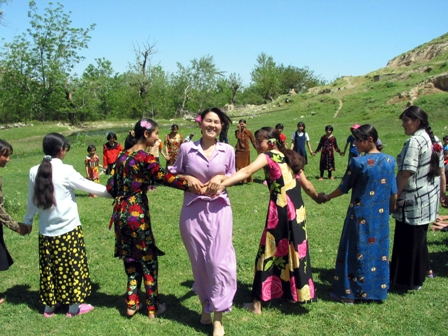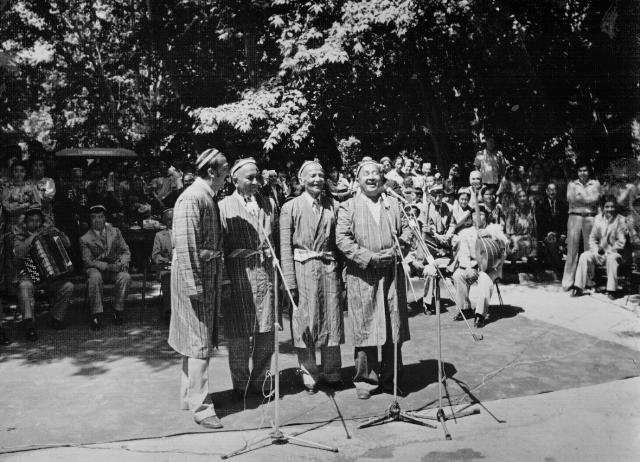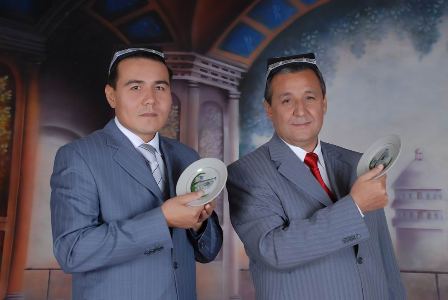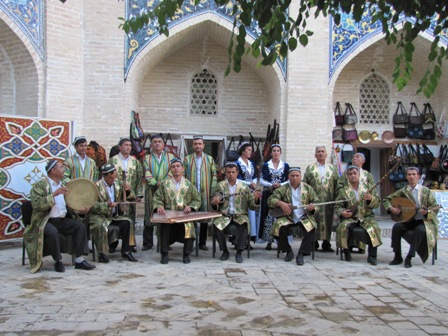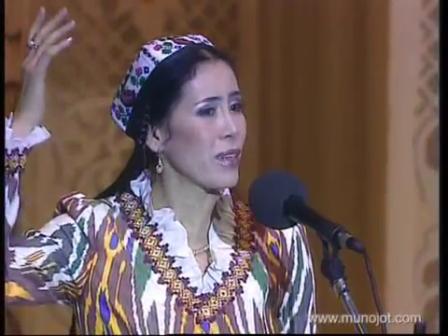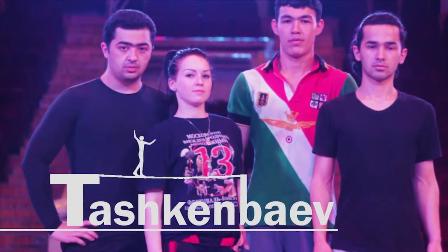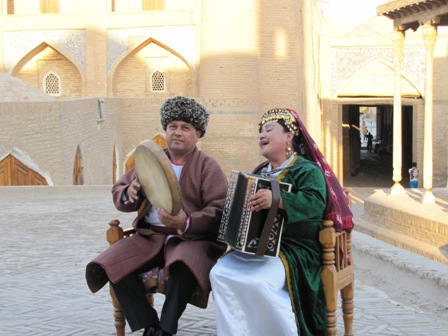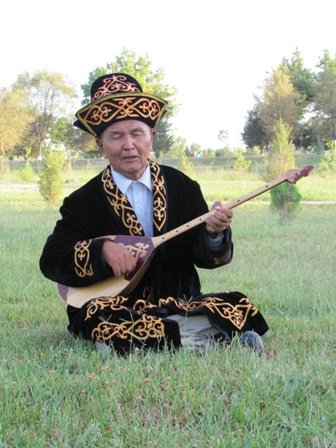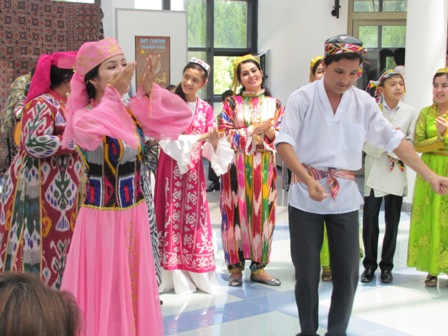Dorbozlik (Rope Walking Art)

Domain: Performing Arts
Index Number: 02.06.01
Dorbozlik is one of the original and unique directions in spectacular art of Uzbekistan. It is a performance on a high-mounted rope and one of the genres of circus art. Its practitioners demonstrate their skill of balancing under various circumstances. The art of rope walking emerged approximately 2500 years ago in the East and later got spread around the world. In olden times ropes were not mounted very high, while the exercises as well as stunts performed were relatively simple.
But with a lapse of time rope walking developed significantly, so that ropes began to be mounted on a much higher height. Since the XVIII century rope walking began to be performed in circus arenas and became an integral part of circus art.
Dorbozlik is the art of rope walking, a genre of folk-spectacular art of Uzbekistan. It bears such names as "dor oyin", "simbozlik", "simdor", "sim oyini", "kata dor oyini", "kichik dor oyini". The term "dorbozlik" or "dor oyini" became widespread in Central Asia in the XIV-XVI and meant "a game" or "show", which was demonstrated on large squares. Although dorbozlik evolved in the Ferghana Valley, in particular, in Quva and Asaka cities, it is nevertheless a very popular genre in folk-spectacular art. It exists in all regions of Uzbekistan as well as in the Republic of Karakalpakstan.
Dorbozlik has ancient roots. Some written sources testify that in the palace of Amir Temur magnificent performances were staged with participation of ropewalkers. There is also information that Uzbek ropewalkers demonstrated their skills in China, India, Afghanistan, Iran, Russia and other countries in the past (i.e. in XVIII- XIX centuries). In the XIX - beginning of the XX century dorbozlik art spread across the whole territory of Turkestan, and Tashkent became its center. At the time dorbozlik performances were usually demonstrated on large fairgrounds and market (bazaar) squares.
Travelling of dorbozes (representing family dynasties) of the Fergana Valley, their strolling way of life, and later, staging performances in circus arenas and touring of Tashkenbaevs family troupe all over the world helped to preserve, and ensure active functioning of dorboz groups in the whole country, to promote dorbozlik performances far beyond the borders of Uzbekistan.
Dorbozes skillfully demonstrated their stunts (running back and forth; jumping; walking with knives and trays tied to their legs; dancing on one or paired ropes blindfolded and with a sack on their heads, etc.) by holding langar (a balancer or long balancing pole) on a rope, which was installed at the height of 25-30 m. Notably, the performances of ropewalkers were always combined with those of polvons (strongmen), illusionists, dancers, qiziqchi and askiyachi (comedians and wisecrackers) as well as with traditional circus-related performances (such as walking on stilts, tricks, acrobatics, equilibristics, legerdemain; tamed bears, snakes, monkeys, horses, goats, etc.).
In the beginning of the thirties of the XX century dorbozlik migrated from open air areas to the circus arena, i.e. to indoor area. This resulted in the emergence of onstage ropewalking practice, with demonstration of performances on both "katta dor" ("large rope") and "kichik dor" or "simdor" ("small rope"). Also technical means and equipment changed (for example, in place of woolen rope a wire began to be used, in place of wooden poles – metallic ones began to be mounted; safety belt was introduced (in the past there was no such device)).
Actually it was dorbozlik art, which laid the foundation of Uzbek circus and promoted its development. And the first person, who introduced the new types of performances to dorbozlik art was Toshkenboy Egamberdiev (and his family dynasty), who regardless of his advanced age, demonstrated his performances on both types of dor (i.e. on "kata dor" and "kichik dor").
Some changes were introduced to the repertoires of ropewalkers as well. Thanks to the usage of safety measures, new, more difficult stunts began to be performed. These included joint performances of several ropewalkers (for example, carrying a partner on one's shoulders or head; carrying two persons on both sides of langar; jumping over another ropewalker, who sits on the rope, etc.), somersaults, standing upside-down, etc. Traditional stunts, performed with yokes, knives, jumps and supports, remained as well.
At present, besides professional dorbozes of "State Circus of Uzbekistan" (they are called "Dorbozes of Uzbekistan") there are more than 40 family-based groups and troupes of dorbozes, which function in all regions of the country. Among them it is possible to mention the following: Yunusali Ghoziev and his family dynasty of dorbozes (Andijan), Tursunali Madaminov and his family-based troupe of dorbozes and polvons (Ferghana), Bakhodir Dadajonov and his family-based troupe of dorbozes (Namangan), Oktam Yusupov and his family-based group of dorbozes (Andijan), etc.
Notably, dorbozlik art was included in the National List of Intangible Cultural Heritage of Uzbekistan. Nowadays, Uzbek dorbozes demonstrate their performances in many foreign countries. For example, dorbozes, representing the family dynasty of Tashkenbaevs (Olimjon, Tohir and Murad), have so far been participating in many international festivals and competitions dedicated to spectacular art.
With the aim of safeguarding and promoting dorbozlik art the following are organized on regular basis: festivals and competitions of dorbozes (the last one was organized in 2014-2015); "Maydon tomosha sanati" and "Kohna zamin ohanglari" Television Festivals (2012-2014); scientific seminars and conferences (for example, Republican Conference entitled "Challenges associated with development and popularization of dorbozlik traditions", which was held at Republican College of Variety and Circus Art with participation of all family-based dorboz troupes in November 2015). In addition, scientific studies are conducted, books are published, films are produced (for example, "Dorbozes of Tashkenbaev family dynasty", which was produced by National Television and Radio Company of Uzbekistan; a film named "Dorboz" , which was created by cameramen from Germany and which is dedicated to the activity of dorboz troupes of U. Yusupov (Andijan) and T. Madaminov (Ferghana)). Currently it is possible to observe active involvement of young people (including girls) in the activities of dorboz troupes.
In general, dorbozlik is a family-based tradition. And knowledge and skills (as well as relevant props, which may include musical instruments, such as doira, or items necessary for staging performances) associated with this art are transmitted from generation to generation based on "ustoz-shogird" ("master-apprentice") methodology. Currently the traditions of dorbozlik art are mastered in Republican College of Variety and Circus Art. Furthermore, dorboz troupes constantly participate in such holidays as Navruz and Independence Day, in international tourist fairs, etc.
It bears mentioning that dorbozlik art was recommended for inscription in the UNESCO Representative List in 2015.





